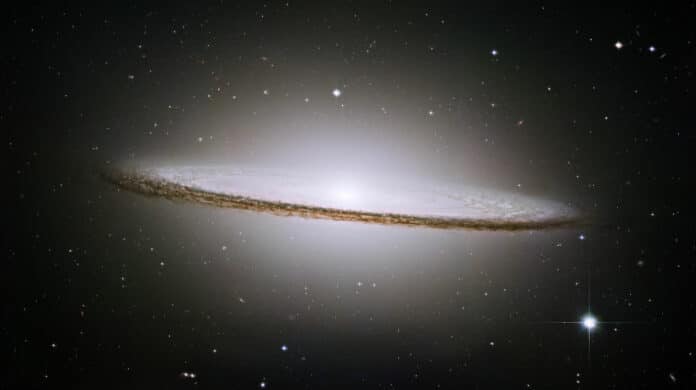One of the universe’s most majestic and attractive galaxies has caught the razor-sharp attention of NASA‘s Hubble Space Telescope. And it’s name is Sombrero Galaxy. Also known as Messier 104 or M104, it is 50,000 light-years across and is located 28 million light-years from Earth, at the southern edge of the rich Virgo cluster of galaxies.
The bright, white, bulbous nucleus that characterizes the nearly edge-on galaxy is ringed by dense dust lanes that make up the galaxy’s spiral structure. The galaxy’s star formation occurs in this dust lane. A large black hole is hypothesized to reside at the center of M104.
This unusual-looking barred spiral galaxy got its name because it resembled the Mexican hat of the same name. Its spiral arms run through a dense dust lane, which is the ring enclosing the center bulge, and it has a bright nucleus with a large central bulge.
From Earth, the Sombrero galaxy appears to be titled nearly edge-on. M104 is barely outside the range of naked-eye viewing at a relatively bright magnitude of +8, although it is visible with a small telescope.
Hubble easily resolves M104’s dense system of globular clusters, which are thought to number close to 2,000, or 10 times the number that orbits our Milky Way galaxy. The age of the clusters, which ranges from 10 to 13 billion years, is comparable to the age of the Milky Way clusters.
